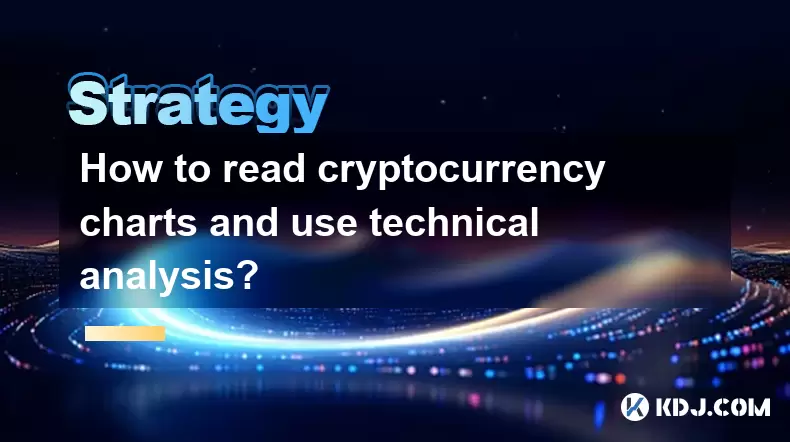-
 Bitcoin
Bitcoin $117500
2.15% -
 Ethereum
Ethereum $3911
6.19% -
 XRP
XRP $3.316
10.79% -
 Tether USDt
Tether USDt $1.000
0.01% -
 BNB
BNB $787.2
2.24% -
 Solana
Solana $175.2
4.15% -
 USDC
USDC $0.9999
0.00% -
 Dogecoin
Dogecoin $0.2225
8.40% -
 TRON
TRON $0.3383
0.28% -
 Cardano
Cardano $0.7868
6.02% -
 Stellar
Stellar $0.4382
9.34% -
 Hyperliquid
Hyperliquid $40.92
7.56% -
 Sui
Sui $3.764
7.63% -
 Chainlink
Chainlink $18.48
10.66% -
 Bitcoin Cash
Bitcoin Cash $582.1
1.88% -
 Hedera
Hedera $0.2601
6.30% -
 Avalanche
Avalanche $23.33
4.94% -
 Ethena USDe
Ethena USDe $1.001
0.02% -
 Litecoin
Litecoin $122.3
2.04% -
 UNUS SED LEO
UNUS SED LEO $8.969
-0.27% -
 Toncoin
Toncoin $3.339
0.86% -
 Shiba Inu
Shiba Inu $0.00001287
4.30% -
 Uniswap
Uniswap $10.43
7.38% -
 Polkadot
Polkadot $3.861
5.08% -
 Dai
Dai $1.000
0.02% -
 Bitget Token
Bitget Token $4.513
3.41% -
 Monero
Monero $267.7
-6.18% -
 Cronos
Cronos $0.1499
4.14% -
 Pepe
Pepe $0.00001110
5.15% -
 Aave
Aave $284.9
8.28%
Is high-frequency trading of Dogecoin feasible?
HFT with Dogecoin is feasible but requires high-speed internet, powerful servers, and strategies like arbitrage to navigate its volatile market conditions.
Apr 19, 2025 at 11:57 am

High-frequency trading (HFT) is a method of trading that uses powerful computer programs to transact a large number of orders at extremely high speeds. When it comes to Dogecoin, a cryptocurrency known for its volatility and active community, the question arises: Is high-frequency trading of Dogecoin feasible? This article delves into the feasibility of HFT in the context of Dogecoin, examining the technical requirements, market conditions, and potential challenges.
Understanding High-Frequency Trading
High-frequency trading relies on sophisticated algorithms and high-speed data networks to execute trades in milliseconds. The primary goal of HFT is to capitalize on small price movements and market inefficiencies. In traditional financial markets, HFT has been a dominant force, but its application to cryptocurrencies like Dogecoin requires a closer look.
Technical Requirements for HFT with Dogecoin
To engage in HFT with Dogecoin, traders need to meet certain technical prerequisites. A high-speed internet connection is essential to minimize latency. Additionally, powerful servers capable of processing large amounts of data in real-time are crucial. Co-location services near cryptocurrency exchanges can further reduce latency, giving traders an edge in executing orders faster than competitors.
Market Conditions and Liquidity
The feasibility of HFT with Dogecoin is also contingent on market conditions, particularly liquidity. Dogecoin's liquidity, while improved over the years, can still be volatile. High liquidity is essential for HFT as it allows for the execution of large volumes of trades without significantly impacting the market price. Exchanges that support Dogecoin, such as Binance and Coinbase, offer varying levels of liquidity, which traders must consider when planning their HFT strategies.
Challenges and Risks of HFT with Dogecoin
Despite the potential benefits, HFT with Dogecoin comes with its set of challenges and risks. Market volatility can lead to significant price swings, making it challenging to predict short-term movements accurately. Regulatory uncertainties surrounding cryptocurrencies add another layer of risk. Technical failures or exchange outages can result in substantial losses, as HFT relies heavily on continuous operation and real-time data.
Strategies for HFT with Dogecoin
For those considering HFT with Dogecoin, developing effective strategies is crucial. Arbitrage is a common HFT strategy that involves buying and selling Dogecoin on different exchanges to profit from price discrepancies. Market making involves providing liquidity to the market by placing buy and sell orders, profiting from the bid-ask spread. Statistical arbitrage uses mathematical models to identify and exploit price inefficiencies. Each strategy requires careful planning and continuous monitoring to be effective.
Implementing HFT with Dogecoin: A Step-by-Step Guide
Implementing HFT with Dogecoin involves several steps, each requiring meticulous attention to detail:
- Choose the right exchange: Select an exchange that supports Dogecoin and offers high liquidity and low latency. Popular choices include Binance and Coinbase.
- Set up infrastructure: Invest in high-speed internet, powerful servers, and consider co-location services to minimize latency.
- Develop or acquire algorithms: Create or purchase HFT algorithms tailored to Dogecoin's market conditions. These algorithms should be capable of executing trades at high speeds.
- Backtest the strategy: Before going live, backtest your HFT strategy using historical Dogecoin data to assess its viability and potential profitability.
- Monitor and adjust: Once live, continuously monitor the performance of your HFT strategy. Be prepared to make adjustments based on market conditions and performance metrics.
Evaluating the Feasibility of HFT with Dogecoin
The feasibility of HFT with Dogecoin depends on various factors, including the trader's technical capabilities, the chosen strategy, and the prevailing market conditions. While HFT can be lucrative, it is not without significant risks. Traders must weigh these risks against potential rewards and ensure they have the necessary infrastructure and expertise to succeed.
Frequently Asked Questions
Q: Can I start HFT with Dogecoin using a regular home internet connection?
A: While it is technically possible to start HFT with Dogecoin using a regular home internet connection, it is not advisable. High-speed internet is crucial for minimizing latency, which is essential for the success of HFT strategies. A regular home internet connection may not provide the speed and reliability required for effective HFT.
Q: Are there any specific Dogecoin HFT strategies that are more successful than others?
A: The success of Dogecoin HFT strategies can vary based on market conditions and the trader's expertise. Arbitrage and market making are commonly used strategies due to their potential for consistent profits. However, the effectiveness of these strategies can depend on factors such as liquidity and market volatility.
Q: How can I mitigate the risks associated with HFT of Dogecoin?
A: Mitigating the risks of HFT with Dogecoin involves several steps. Diversify your strategies to spread risk across different approaches. Implement robust risk management protocols, such as setting stop-loss orders and monitoring market conditions closely. Stay informed about regulatory changes that could impact the cryptocurrency market. Finally, ensure your technical infrastructure is reliable and capable of handling the demands of HFT.
Q: Is it necessary to have programming skills to engage in HFT with Dogecoin?
A: While it is possible to purchase pre-built HFT algorithms, having programming skills can be highly beneficial. Understanding how to develop and customize algorithms allows traders to tailor their strategies to specific market conditions and improve their chances of success. Knowledge of programming languages like Python or C++ can be particularly useful in this context.
Disclaimer:info@kdj.com
The information provided is not trading advice. kdj.com does not assume any responsibility for any investments made based on the information provided in this article. Cryptocurrencies are highly volatile and it is highly recommended that you invest with caution after thorough research!
If you believe that the content used on this website infringes your copyright, please contact us immediately (info@kdj.com) and we will delete it promptly.
- Stablecoins, Hong Kong, and On-Chain Finance: Navigating the Regulatory Maze
- 2025-08-08 12:30:12
- Tron's Sell-Off Spurs Altcoin Shift: What's Next for TRX?
- 2025-08-08 08:30:12
- Euler, DeFi, and Coinbase: A New York Minute on the Latest Buzz
- 2025-08-08 12:30:12
- RUVI Presale: Is the Growth Potential Real?
- 2025-08-08 09:10:12
- Sleep Token's US Takeover: Thornhill Rides the 'Even In Arcadia' Wave
- 2025-08-08 08:30:12
- FTT Token's Wild Ride: Creditor Repayments vs. Market Drop - A New Yorker's Take
- 2025-08-08 07:10:12
Related knowledge

How to read cryptocurrency charts and use technical analysis?
Aug 08,2025 at 11:08am
Understanding the Basics of Cryptocurrency ChartsCryptocurrency charts are graphical representations of price movements over time. These charts are es...

How to avoid common crypto investment mistakes?
Jul 13,2025 at 01:35am
Understanding the Risks of Crypto InvestmentInvesting in cryptocurrency can be highly rewarding, but it also comes with significant risks. One of the ...

What is a long-short crypto strategy?
Jul 15,2025 at 10:56am
Understanding the Basics of a Long-Short Crypto StrategyA long-short crypto strategy is an investment approach where traders simultaneously take long ...

What is a long-short crypto strategy?
Jul 11,2025 at 01:28pm
Understanding the Basics of Long-Short Crypto StrategyA long-short crypto strategy is an investment approach where traders take both long and short po...

How to use the RSI indicator for crypto?
Jul 12,2025 at 03:56pm
Understanding the RSI Indicator in Cryptocurrency TradingThe Relative Strength Index (RSI) is a momentum oscillator used to measure the speed and chan...

Is copy trading a good strategy for crypto beginners?
Jul 12,2025 at 08:28am
Understanding Copy Trading in the Cryptocurrency MarketCopy trading is a strategy where novice traders replicate the trades of experienced investors a...

How to read cryptocurrency charts and use technical analysis?
Aug 08,2025 at 11:08am
Understanding the Basics of Cryptocurrency ChartsCryptocurrency charts are graphical representations of price movements over time. These charts are es...

How to avoid common crypto investment mistakes?
Jul 13,2025 at 01:35am
Understanding the Risks of Crypto InvestmentInvesting in cryptocurrency can be highly rewarding, but it also comes with significant risks. One of the ...

What is a long-short crypto strategy?
Jul 15,2025 at 10:56am
Understanding the Basics of a Long-Short Crypto StrategyA long-short crypto strategy is an investment approach where traders simultaneously take long ...

What is a long-short crypto strategy?
Jul 11,2025 at 01:28pm
Understanding the Basics of Long-Short Crypto StrategyA long-short crypto strategy is an investment approach where traders take both long and short po...

How to use the RSI indicator for crypto?
Jul 12,2025 at 03:56pm
Understanding the RSI Indicator in Cryptocurrency TradingThe Relative Strength Index (RSI) is a momentum oscillator used to measure the speed and chan...

Is copy trading a good strategy for crypto beginners?
Jul 12,2025 at 08:28am
Understanding Copy Trading in the Cryptocurrency MarketCopy trading is a strategy where novice traders replicate the trades of experienced investors a...
See all articles

























































































